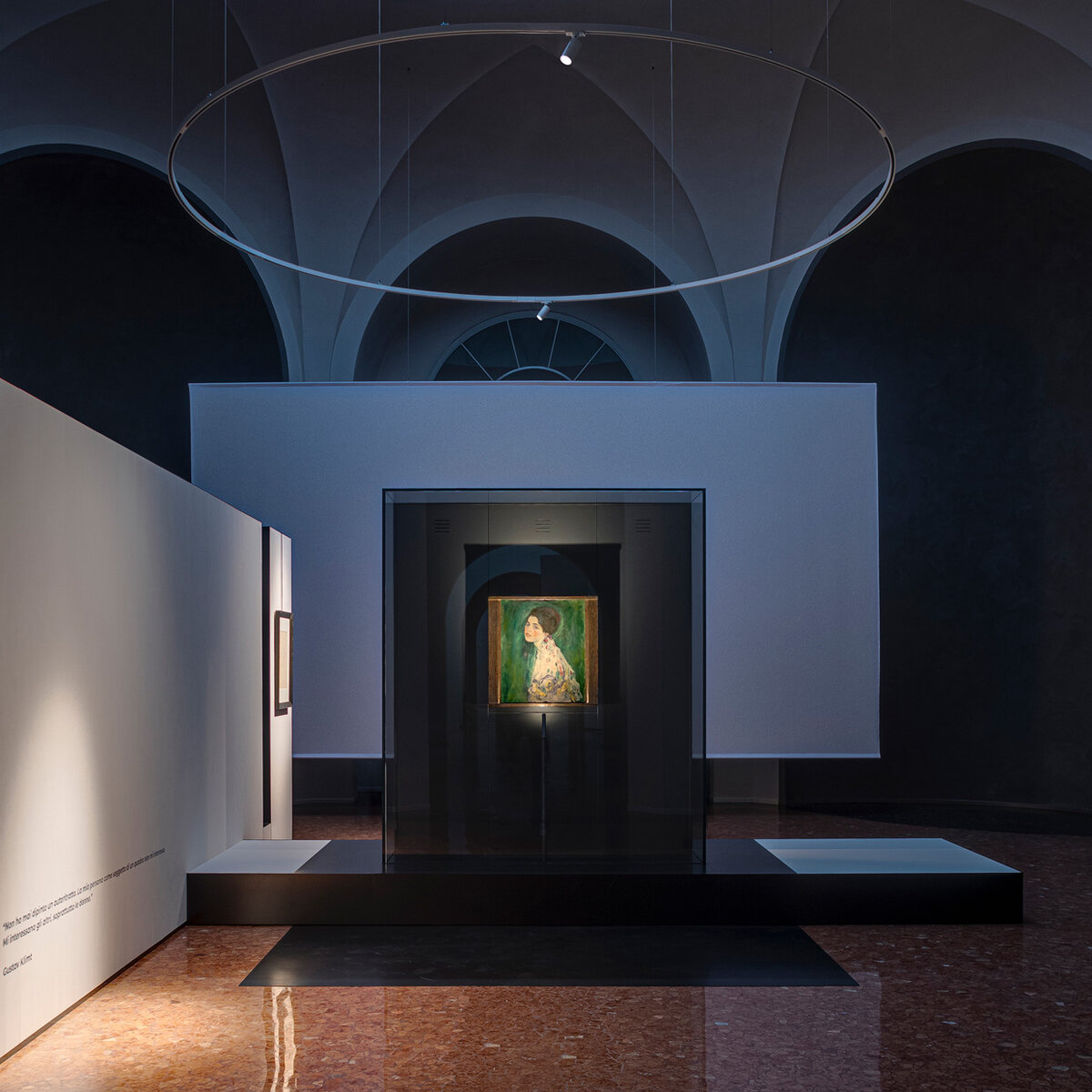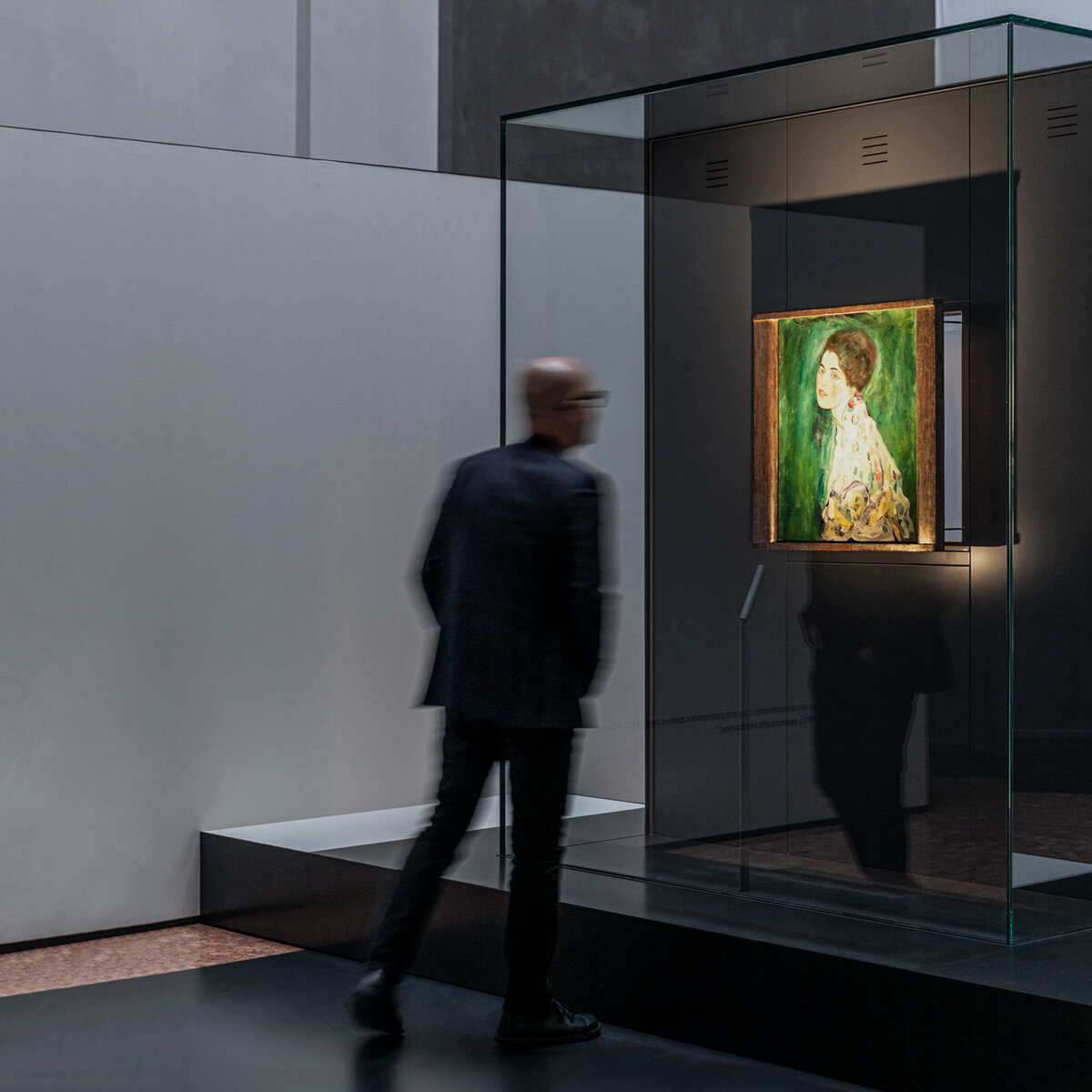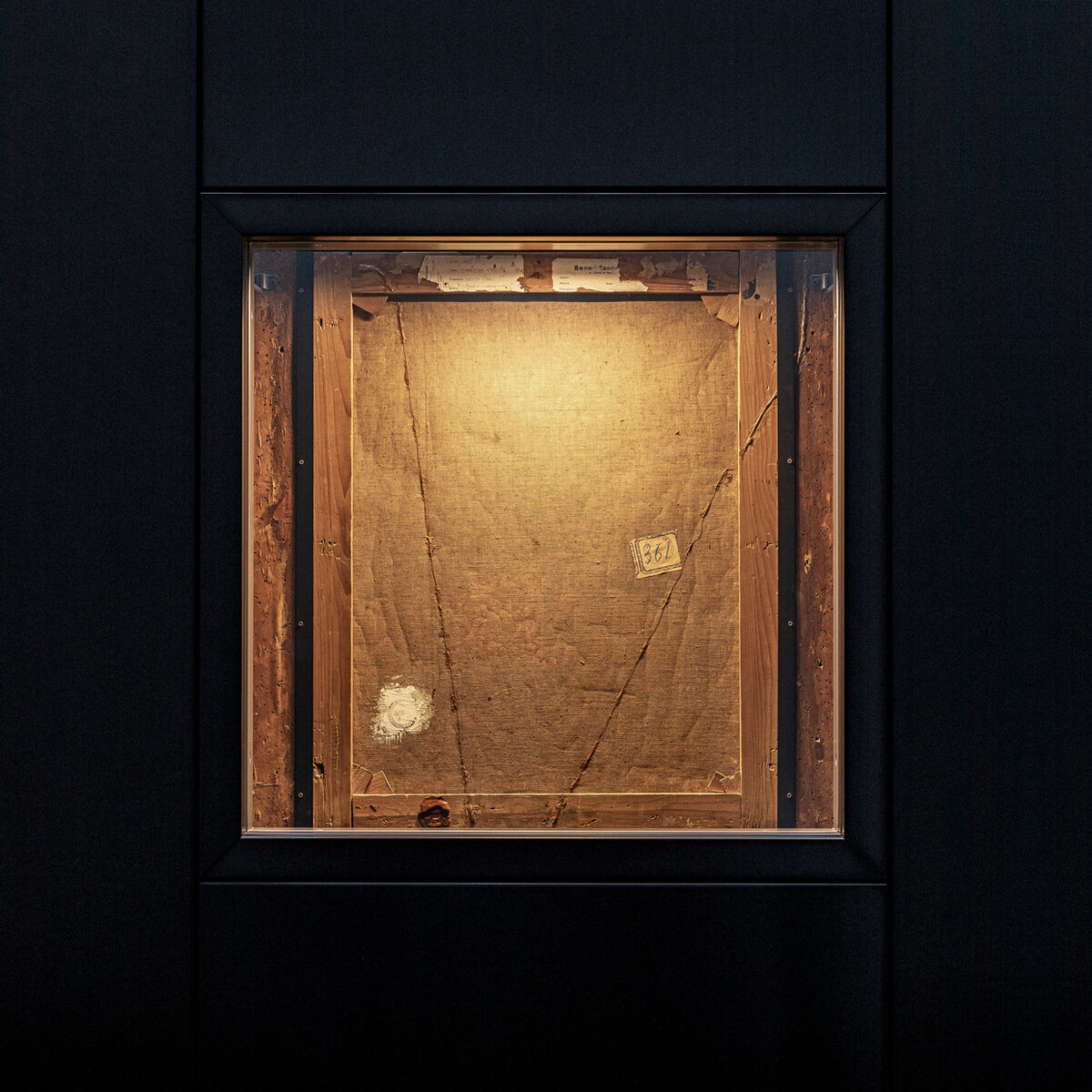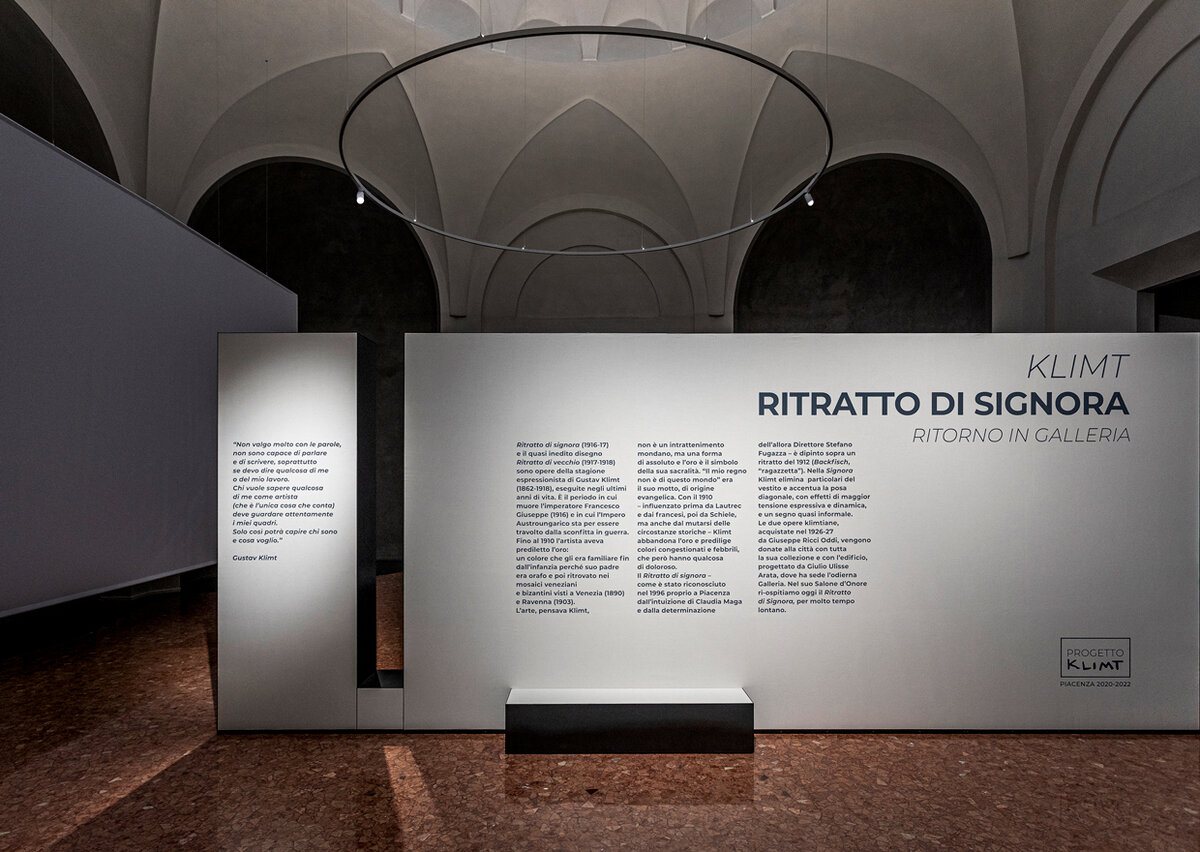The painting was purchased by the collector Giuseppe Ricci Oddi in 1925 and since then has been kept in the gallery of the same name in Piacenza.
In 1996 it was discovered that the portrait was a repainted version of a lost work by Klimt, Woman with a Hat, exhibited only once in 1912 in Dresden and then disappeared five years later.
In 1997 the painting was stolen from the gallery and found by chance in 2019, to be exhibited again on November 28th, 2020, in a dedicated context for which we took care of the lighting.
It is in these circumstances that we interrogate about the meaning of artificial light.
In what light did Gustav Klimt paint "Portrait of a Lady"? And how would he have illuminated his masterpiece?
We approached the canvas with delicacy and philological coherence.
Considering the set-up, we have reduced the shadow of the painting frame as much as possible, made the reflections of the oil paint invisible and represented the colours in a realistic way.
It is one of those works that we refer to as absolute light.
The conceived lighting system is the result of the least possible lighting intervention. Just pure light.
A very delicate light on the back of the canvas to highlight the signs of aging, the seals, the notes, and a small projector in the shape of a microphone for the painting as a symbolic attempt to give the Lady her voice back after years of silence and darkness.
In the space, a delicate indirect light to capture the beauty of the gallery.
KLIMT PROJECT
Ricci Oddi Gallery
29121 Piacenza, Italy
© Galleria Ricci Oddi and Klimt Foundation
Photo credits: Fausto Mazza




